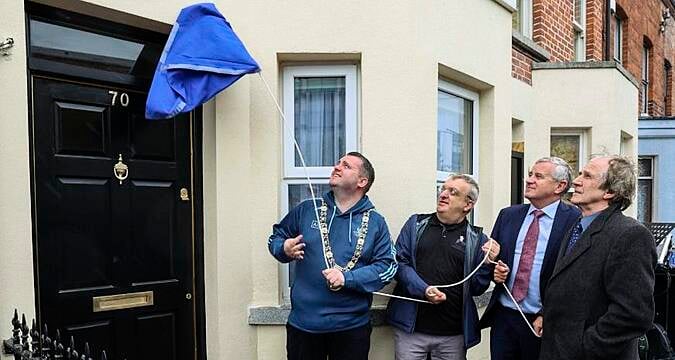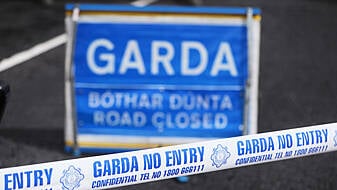A plaque has been unveiled in Dublin in honour of socialist and trade unionist James Connolly, who was executed in the aftermath of the 1916 Rising.
The plaque was unveiled on Monday at 70 South Lotts Road in Ringsend, Connolly’s home from December 1910 to May 1911, by the Lord Mayor of Dublin Daithi de Roiste.
The house is one of two in the capital city in which Connolly lived.
At the unveiling, Mr de Roiste said the plaque would serve as a reminder to people that Connolly gave his life to improve the lives of Irish citizens.

Connolly’s great-grandson James Connolly Heron was present for the unveiling.
Born in Edinburgh in 1868 to Irish parents, Connolly became a key figure in the Irish trade union movement and socialist politics.
Connolly also moved to Belfast to become an organiser for the Irish Transport and General Workers’ Union (ITGWU), a precursor to the trade union Siptu, and witnessed sectarianism in Belfast and the North East.
In 1912, along with Jim Larkin and others on the Dublin Trades Council, Connolly was instrumental in getting the Irish Trades Union Congress to establish a political wing, which became the Labour Party.
Against the background of the First World War, Connolly became increasingly militant and as leader of the Irish Citizens’ Army, agreed to act together with the Irish Republican Brotherhood (IRB), who were planning an insurrection.
During the 1916 Rising, Connolly was in charge of the Dublin Brigade and fought in the GPO alongside Irish activist and poet Padraig Pearse, who read out the Proclamation and announced their surrender after six days.
When Connolly was executed at Kilmainham on May 12th, aged 47, he was unable to stand due to being badly injured and was fired at while seated.
His execution, along with those of other Rising leaders, provoked sharp anger among the Irish public.
Mr de Roiste said: “When we think of the great figures of our history, like James Connolly, we often forget that they lived their lives on the same streets that we do, making their way through our city day in and day out.
“This plaque will remind those who see it that he gave his life to improve the lives of his fellow citizens.”
The plaque was proposed by historian Dr Conor McCabe, of Queen’s University Belfast, who said “Connolly was living here around the time that his most famous work, Labour In Irish History, was first published in book form.
“This plaque is a tangible link to both his life and his writings.”
Joe Cunningham, general secretary of Siptu, said at the unveiling: “Connolly’s commitment to socialism and broad experience as a trade union organiser in Britain and the United States ensured that the interests of working people were incorporated in the 1916 Proclamation.
“That, in his own words, at the raising of the Irish flag over Liberty Hall in April 1916, ‘The cause of labour is the cause of Ireland, the cause of Ireland is the cause of labour.’”
The decision to erect the plaque was made by the Dublin City Council Commemorations & Naming Committee.
Its chairman Councillor Micheal Mac Donncha said: “The Commemorative Plaques Scheme allows the city to formally commemorate people who have made a significant contribution to the life of Dublin.
“We welcome suggestions from the public for people and events to be commemorated, and full details are on the council website.”







